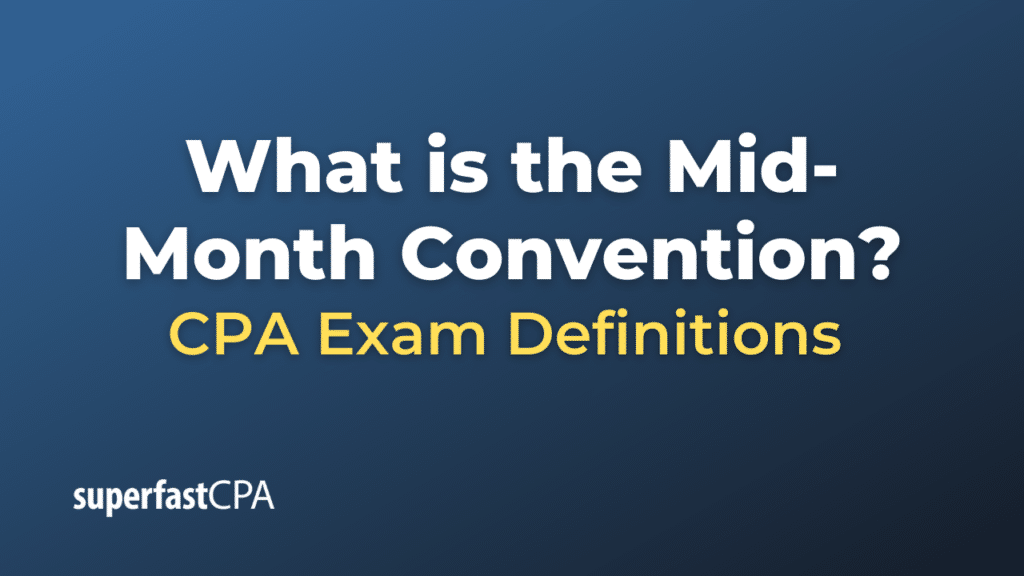Mid-Month Convention
The mid-month convention is a method of calculating depreciation for tax purposes stipulated by the IRS in the United States. According to this rule, no matter when during a month an asset is acquired or disposed of, it is assumed to have been placed in service or disposed of in the middle of that month.
For example, if a company buys a piece of machinery on February 2nd or February 27th, for the purposes of calculating depreciation, the IRS considers that the machinery was put into service in the middle of February.
This convention affects the depreciation deduction for the year the property was placed in service and the year it’s disposed of because the deduction for both of those years is half of what it would be if the asset had been in service for the full year. The mid-month convention applies to most real property (like buildings and their structural components).
The purpose of this convention is to simplify the tax calculation process, as it can be challenging to track the exact day each asset is acquired or disposed of, especially for businesses with many assets.
Example of the Mid-Month Convention
Here is an example of how the mid-month convention works:
Let’s say a company purchases an office building for $1.2 million on January 10, 2023. The company uses the straight-line method of depreciation with a 39-year useful life for the building, as set by the IRS for nonresidential real property.
Normally, without considering the mid-month convention, the annual depreciation for the building would be:
$1,200,000 (purchase price) ÷ 39 years (useful life) = $30,769.23 per year
However, with the mid-month convention, the building is considered to be placed into service in the middle of January, so the company can only claim 11.5/12 of the yearly depreciation expense for 2023:
$30,769.23 (yearly depreciation) x 11.5/12 = $29,339.16
So, the depreciation expense for the building for the year 2023 is $29,339.16.
In the final year of the property’s useful life, or if the property is sold, only a half-month of depreciation would be claimed, no matter when in the year the disposal happens. This method ensures that the total depreciation over the property’s lifetime equals the building’s initial cost.













